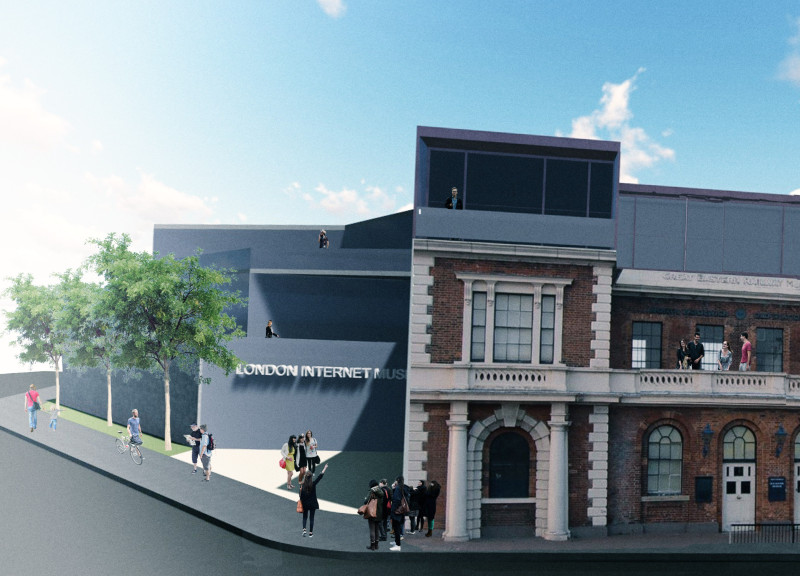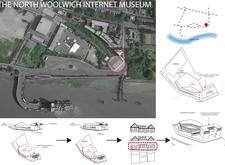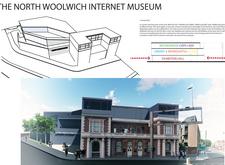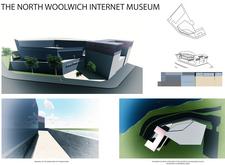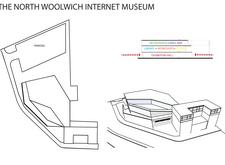5 key facts about this project
### Project Overview
Located in North Woolwich, London, the Internet Museum is designed to honor the evolution of digital technology within a contemporary architectural framework. The structure integrates modern design with historical context, inviting exploration and interaction with the narrative of the internet. As a cultural asset in the area, the museum aims to enhance community engagement and serve as a resource hub.
### Form and Accessibility
The design concept embodies the theme of connectivity, reflected in the museum's undulating form that contrasts with surrounding traditional architecture. The varied rooflines—comprising both flat and sloped elements—create a dynamic visual interaction with the local landscape. Accessibility is a fundamental aspect of the design, featuring a ramp that connects different functional zones, facilitating ease of movement for all visitors.
### Material Selection
Material choices are integral to the museum's connection with its environment and purpose. Traditional brick references Woolwich's architectural heritage, while extensive use of glass enhances transparency, inviting natural light into the interior. Structural steel supports the distinctive forms of the building, complemented by concrete that grounds the design in its surroundings. Timber accents add warmth, bridging the intersection of nature and technology.
### Spatial Organization
The interior spaces are organized to enhance visitor experience. The main entrance offers clear sightlines to key areas, including a café, library, and exhibition hall, arranged sequentially for easy navigation. The exhibition hall is designed as a flexible space accommodating various media, fostering interaction and education about the history of the internet. Adjacent to this, dedicated library and workshop facilities encourage hands-on engagement with digital technologies, reinforcing the museum's educational mission.
### Unique Features
Key features include interactive learning environments utilizing modern technology for engaging displays, as well as outdoor terraces that provide views of the Thames and spaces for informal gatherings. The museum also includes facilities for community workshops and cultural events, further integrating it into the local fabric. Architectural elements combine contemporary design with respect for North Woolwich's character, ensuring the museum stands out while echoing its surroundings.


